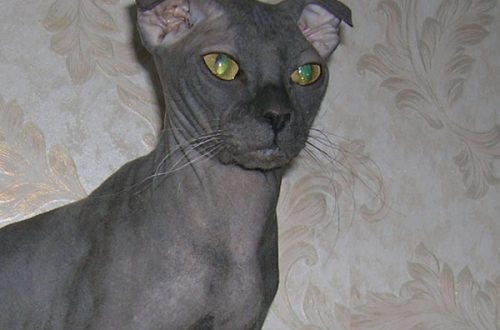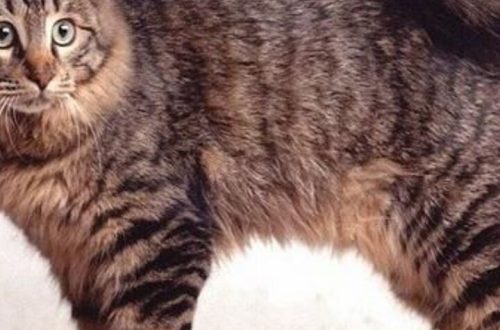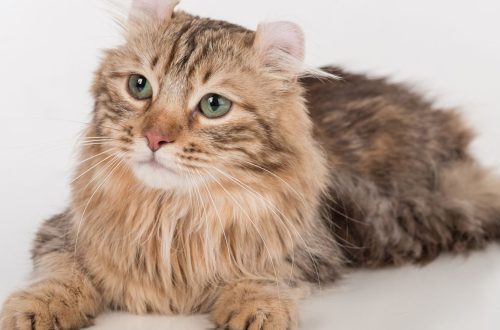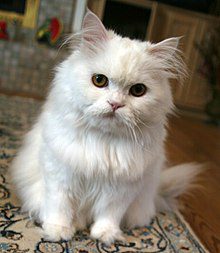
Persian cat
Other names of Persian Cat: Pers
The Persian cat is one of the most popular breeds today. The original appearance and calm nature earned her the love of connoisseurs of purring pets all over the world.
Contents
- Characteristics of Persian cat
- Basic moments
- History of the Persian cat breed
- Video: Persian cat
- Appearance of the Persian cat
- Photo of Persian cat
- The nature of the Persian cat
- Upbringing
- Care and maintenance
- Health and disease of the Persian cat
- How to choose a kitten
- Photo of persian kittens
- How much is a persian cat
Characteristics of Persian cat
| Country of origin | Iran |
| Wool type | Shorthair |
| Height | up to 30 cm |
| Weight | from 4 to 7 kg |
| Age | 13–15 years old |
Basic moments
- The Persian cat is exclusively a domestic animal in the literal sense of this definition. Representatives of this breed have lost the ability to hunt, they cannot run fast and make high jumps. Your pet will not need to walk outside.
- Persians like to lie down for a long time. Such inactivity is characteristic of all representatives of the breed and is not a sign of any physical ailment.
- Persian cats are very calm and do not need large spaces. They will never bother you with their activity and get in the way. For the same reason, you will not have to be upset because of torn curtains and damaged upholstery of upholstered furniture.
- Persians are very affectionate and do not like loneliness. They will even prefer to sleep with you in bed and it is difficult to wean them from this.
- The kind docile disposition of the animal allows you to safely leave even the smallest children alone with him.
- Owners of Persian cats note their high intelligence. They are well trained, follow simple commands, quickly become accustomed to the tray.
- A Persian will rarely call attention to his problems by meowing. In most cases, he will simply come to the owner and stare at him intently, as if trying to mentally convey to you the essence of his request.
- Due to their balanced nature, these “sofa” cats easily find a common language with other pets and peacefully share their living space with them.
- The Persian cat will treat all household members peacefully and calmly, some alertness can manifest itself only when a stranger appears, but this will not last long.
- The disposing appearance of the animal makes most people want to take a cat in their arms. If she resists – never insist on your own. The Persian does not like violence and can hold a grudge for a long time.
- Persian cats tend to overeat. They often beg in an effort to get a tasty morsel from the owner. If you do not accustom your pet to a certain diet and indulge his gastronomic desires, then health problems due to obesity will not keep you waiting.
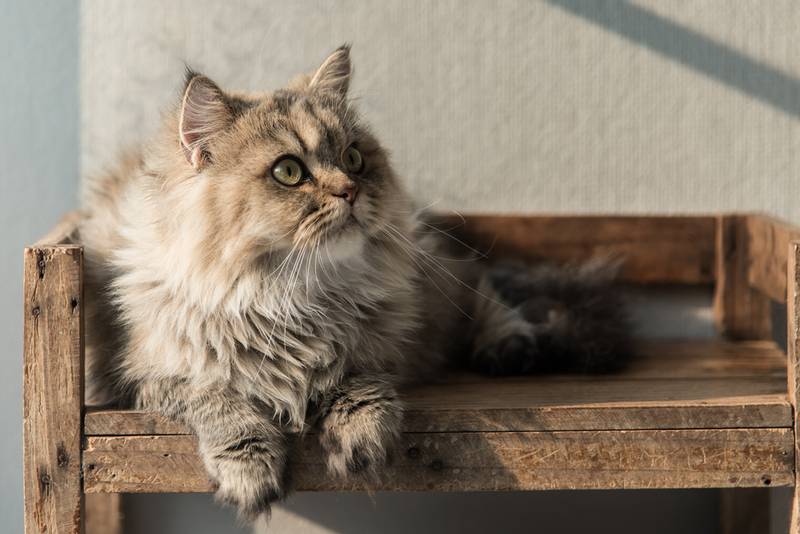
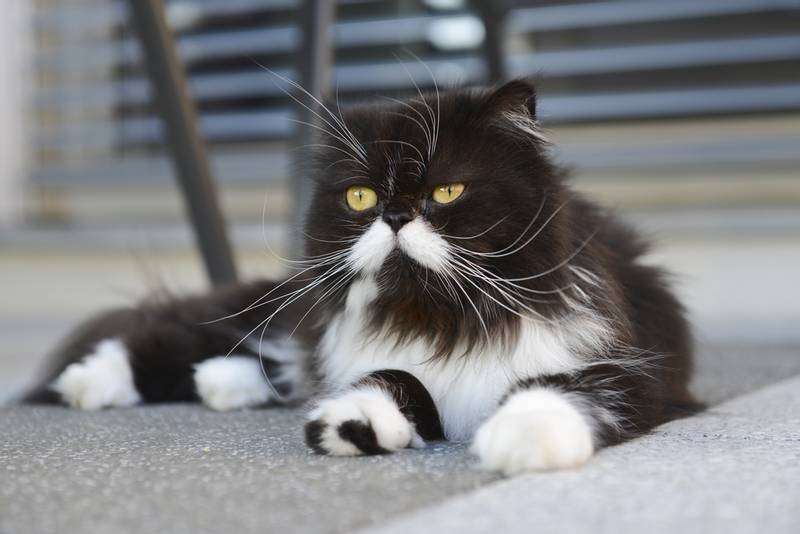
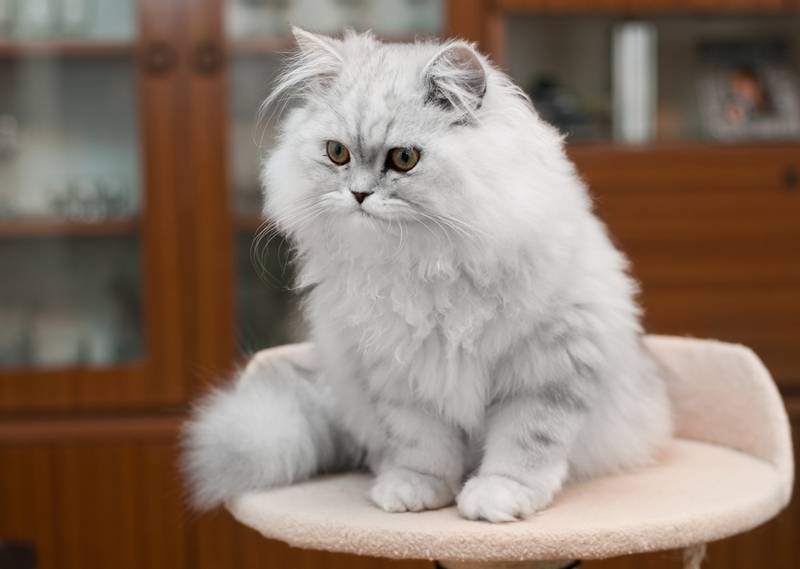
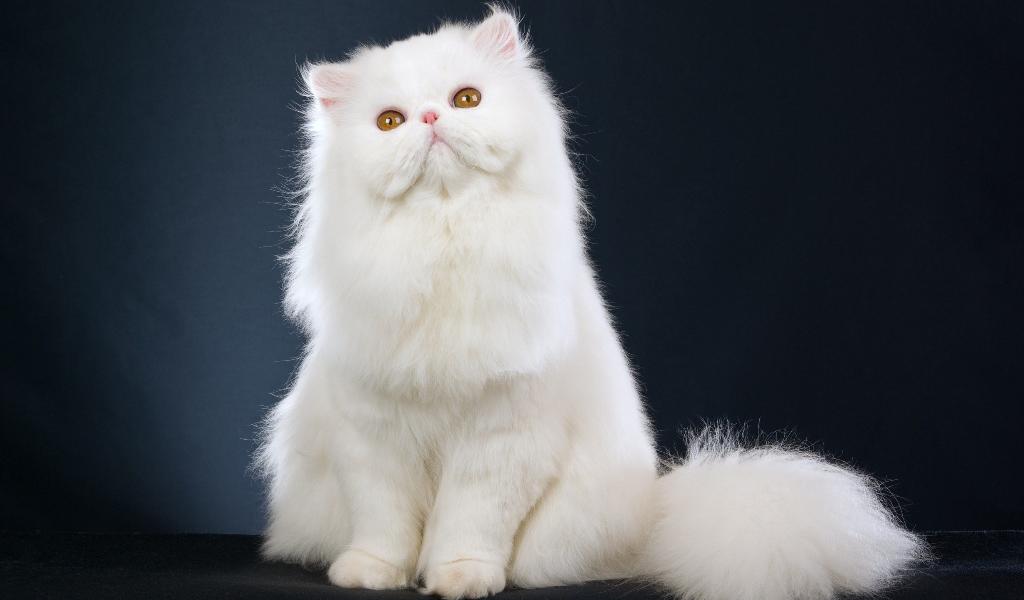
The Persian cat is one of the most beautiful domestic breeds. This is a true aristocrat who incredibly combines an incomparable appearance, intellect and regal demeanor with amazing affection and sincere love for her master. Thanks to this harmonious combination, the Persian cat is confidently ahead of representatives of other breeds in the popularity rating.
History of the Persian cat breed
There are several versions of the origin of Persian cats.
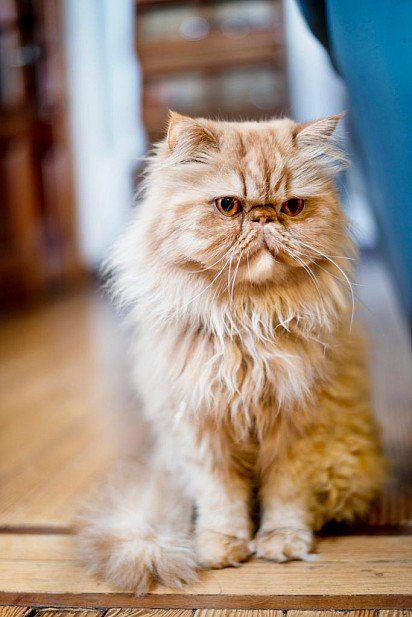
According to one of them, the first long-haired animals were brought to Europe in the twenties of the 17th century by the Italian aristocrat Pietro della Valle from his travels in Turkey and Persia. In the city of Isfahan, he acquired several pairs of animals that were amazing and unusual for Europe at that time and sent them to Italy. Unfortunately, nothing is known about the further fate of these animals. And who knows how the history of the Persians would have developed further if the French scientist Nicole-Claude Farby, who corresponded with della Valle, had not turned out to be a true lover of cats. Having become interested in the breed described by the Italian and previously unknown in the Old World, he brought several Turkish Angora cats to France..
Luxurious long-haired beauties won the hearts of the European aristocracy, including the all-powerful Cardinal Richelieu. With such patrons, the new breed has become one of the most elite. Having an oriental cat has become not only fashionable, but also prestigious. Depending on where they were brought from, furry pets in those days were called Turkish, Asian, Russian, and even Chinese. Bearing in mind that the Persians began their spread across Europe from France, for some time they were called French cats.
According to another version, long-haired animals originally appeared on the territory of Russia, where the presence of such a cover was due to harsh climatic conditions. It was from here that these outlandish animals came to the East, and only later, in the 17th century, Europeans first learned about them.
In the scientific literature of the late 18th century, two main types of long-haired cats are described. The first – animals are light, graceful, with fine soft hair, a wedge-shaped head and sharp ears. The second is more massive round-headed and undersized individuals with long hair and the presence of a thick undercoat.
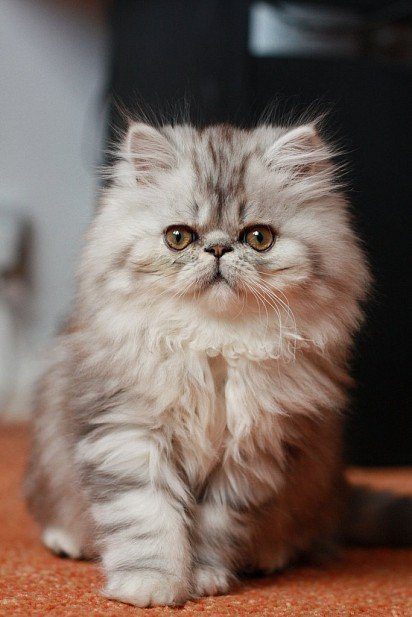
Soon the new breed came to England. British felinologists have found enough reason to divide long-haired cats into two breeds depending on their type. The first began to be attributed to the Turkish Angoras, and the second was called at first French, and then Persian cats. Interest in long-haired pets and their breeding was so great that in 1887 the Persians were registered. One of the first among other domestic cats, they gained official status. The breed was called “Persian Longhair”.
A new stage in the development of the breed began at the end of the 19th century, when the Persians came to the USA. American breeders have put a lot of effort into changing the classic British version of the cat’s appearance, and they have succeeded a lot. A new “extreme” type appeared, which was characterized by an unusual appearance of the muzzle of the animal: the shortest possible nose with a high stop, an overhanging forehead, pronounced folds from the corners of the eyes to the mouth, and widely spaced eyes. Such an unusual exterior attracted cat lovers, but it was also the cause of multiple animal health problems. Only hard work made it possible to minimize the negative results of breeding experiments. Extreme Persians are very popular today, and many consider them to be the true representatives of the breed. This is not entirely fair.

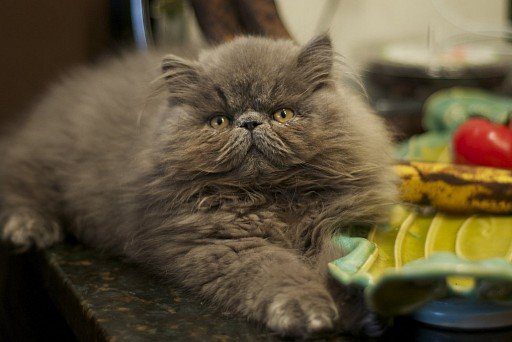
Video: Persian cat
Appearance of the Persian cat
The size of the animal is medium to large. Weight – from 3.5 to 7 kilograms.
Head
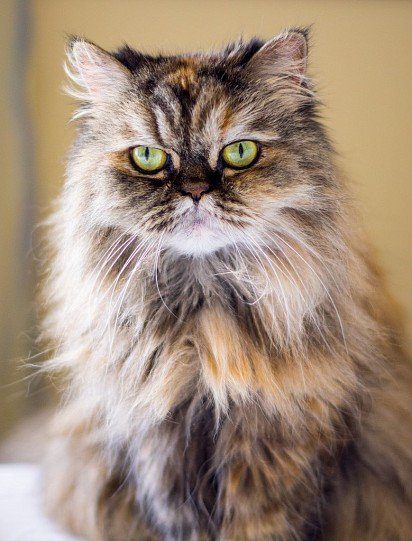
Large, with a convex dome-shaped skull. The cheekbones are powerful, the cheeks are thick and round. Stop clearly defined. The nose is very short and wide, often upturned. In Persian cats of the “Pekingese” type, the nose is small and, as it were, depressed. The muzzle is wide and round. The jaws are well developed, the chin is weak.
Eyes
Large, round, as if open. Widely spaced. The color of the eyes must correspond to a certain color. For chinchillas, silver and golden individuals – a green tint, a blue iris is characteristic of color points. The combination of light blue eyes + white color is highly valued. Copper and orange tones meet the standard for any Persian color. White Persian cats can have multi-colored eyes (one is light blue, the other is orange).
Ears
The ears of Persian cats are comparatively small and widely spaced. The tips are rounded, the auricle inside is well pubescent.
Neck
Thick with well developed muscles, short.

Body
Rather large, muscular, massive. The chest is deep and wide, the back is wide and short. The width of the shoulders and croup is almost the same. The skeleton is strong.
Legs
Short, powerful, well muscled. The skeleton is straight.
Paws
Strong, rounded, wide. Long hair between toes.
Tail
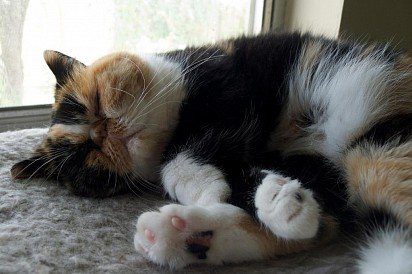
The tail of the Persian cat is proportional to the body, short, thick with a rounded tip. Very well put down.
Wool
Persian wool is long, up to 10 cm on the body and up to 20 cm on the “collar”, soft and delicate to the touch. The undercoat is thick.
Color
The breed standard allows any color option. The classic types of color include solid (without stripes and patterns); tortoiseshell (in cats); “smoke”, when the extreme part of the hair is white (the ideal proportion is 1/3 – white, 2/3 – colored); bicolor, silver, gold, chinchilla, color point, seal point, liek point, blue point, tabby (marble, brindle or spotted).
Disadvantages of the breed
An elongated narrow head, sharp and close-set large ears, a long nose. Small slanted eyes. Long body, legs and tail. Oval paws and long toes.
Disqualifying signs in Persian cats are considered to be a knotty tail, poorly developed and with pronounced jaw defects, “medallions” on the chest.
Photo of Persian cat
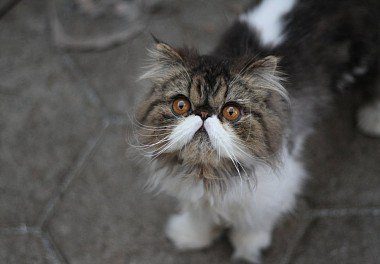
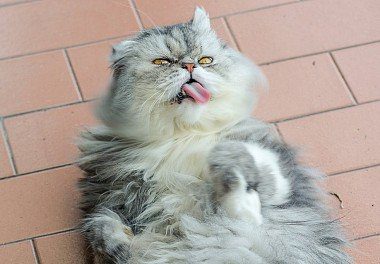
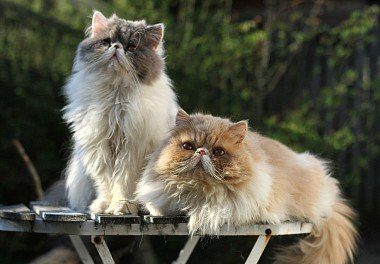
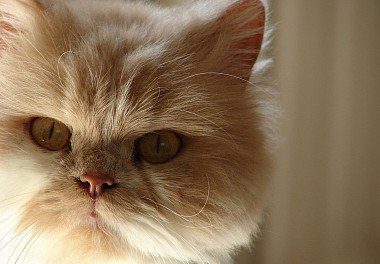
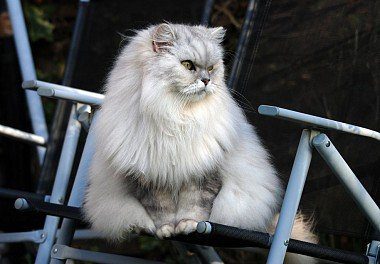
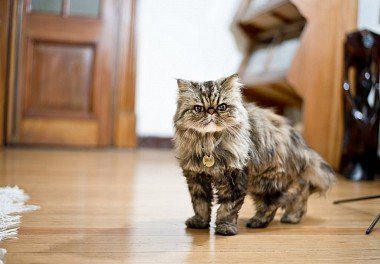
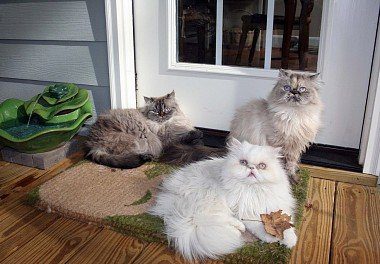
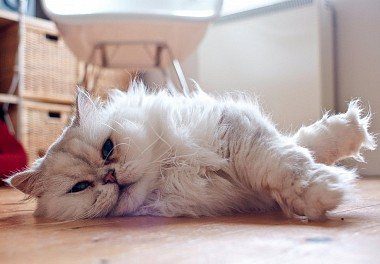
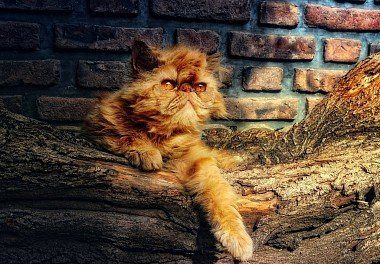
The nature of the Persian cat
The Persian cat has a surprisingly calm, friendly and balanced character. The psychological feature of the Persians is that they are very afraid to upset the owner: after all, these are purely domestic cats, very attached to a person and tuned in to give him joy and pleasure. Even if you accidentally offended a Persian cat, she will not “sulk” for a long time and will gladly accept all your apologies.
There is one caveat: at first, the Persians are afraid to sit in a person’s arms. Therefore, in no case should you hold them if they break out. The cat needs to get used to the person.
Representatives of this breed are inactive, even somewhat lazy. Persian cats hardly even meow; to get attention, they simply sit down and stare into the eyes of the object. They like to lie in one place for a long time, so the questions “where is the cat now and what is she doing” will not bother you. But if you offer your pet to play with a ball or chase an artificial mouse, he will never refuse.
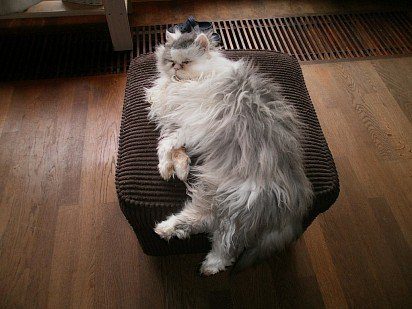
The Persian, unlike other breeds, cannot be called a cat that walks by itself. They are big couch potatoes who love their owner and appreciate comfort. They are not interested in walking outside, but lying on the windowsill and watching the world around them is their favorite pastime, so if you live on high floors, consider precautions so that your pet does not reflexively jump after a bird flying by.
It is not difficult for a Persian cat to establish contact with dogs; pet parrots and canaries in Persian society are completely safe – even outside the cage. The heart of the Persians is open to all. True, they are suspicious of strangers, but only at first, after a closer acquaintance, they will be as friendly as with the rest.
Mother cats are very caring and take excellent care of their kittens, while they are absolutely not jealous and do not show any aggression towards others.
The Persian cat, by its nature, is ideal for both a single person and a large family, where there are not only small children, but also other types of pets.
Upbringing
Persian cats are very smart and vulnerable creatures. When raising a kitten, in no case show impatience or aggression. Also, loud screaming and noise when communicating with the baby are unacceptable. Methods of physical influence have a particularly painful effect on the psyche of a pet. It must be remembered that it is impossible to carry a Persian cat by lifting it by the withers. Paws must be supported.
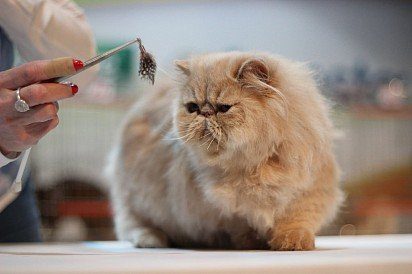
One of the main requirements that a young Persian needs to learn should be the fulfillment of your ban on certain actions (aggressive behavior towards a person, damage to property). You can use the usual dog commands “Fu!” or “No!”, which, for greater persuasiveness, it makes sense to accompany with a loud clap of your hands. The execution of the command should be immediately encouraged, and disobedience should immediately be followed by punishment. It is impossible to beat a cat, it is enough to throw a newspaper at it or sprinkle it with water.
Talk to your pet more often. And do it expressively, and the baby will soon learn to distinguish by your voice whether you are happy with it or not.
Don’t forget to play with the kitten. Persian cats do not like loneliness very much and easily become depressed.
As you build your relationship with a new friend, remember that the best results can only be achieved with love and patience.
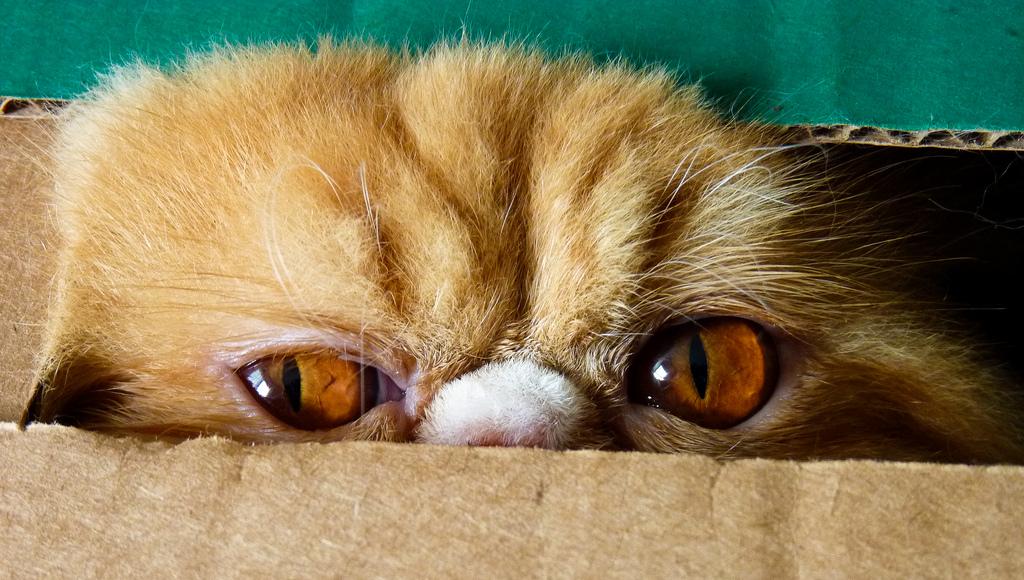
Care and maintenance
The Persian cat is an elite breed. The maintenance of such an animal will require a lot of attention and considerable financial costs from the owner. You will hardly find any other cat that would be so dependent on a person as a Persian. To keep your pet always beautiful and healthy, you will have to provide him with proper care, balanced feeding and proper support from an experienced veterinarian.
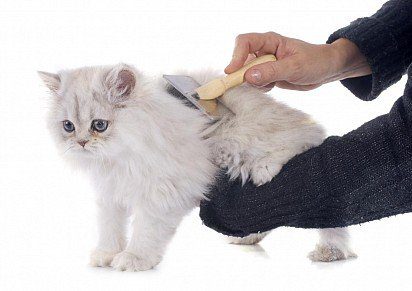
As for the living space, everything is more or less clear here. Persian cats are very calm and pliable, they like to spend a lot of time either in the hands of the owner, or in a cozy comfortable place allotted to them. They will easily get used to both the conditions of a city apartment and a large country house. The main thing is that family members do not forget about the animal.
Owners of private houses should not worry about the fact that the cat, going out for a walk, is not lost. Persian cats are exceptional homebodies, and outdoor walks are not among their favorite activities.
None of these cats are hunters. Due to their phlegmatic nature, they get along well with other pets, including birds and rodents.
The Persian cat appreciates comfort and cosiness very much. If possible, get a special sleeping place for your pet – a house or a bed. Your concern will definitely be appreciated. An easy chair or sofa will be an acceptable alternative for the animal. In this case, you should be careful and attentive, especially with a kitten. Inadvertently, you can injure your baby if he sleeps in your bed or likes to lie in a chair, sitting in which you are used to reading newspapers or watching TV.
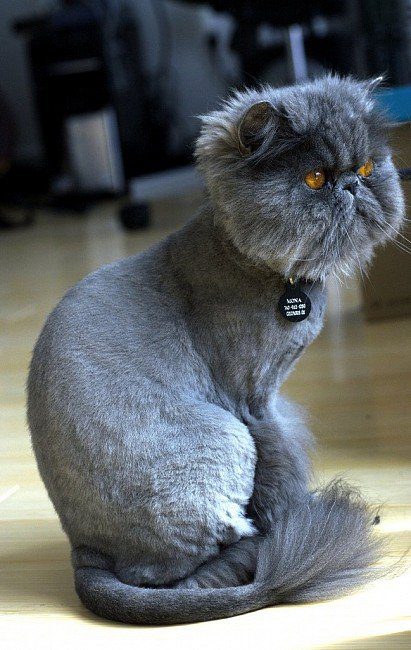
Persian cats are very impressionable creatures. Never force a pet out of its home. If the cat is resting, do not touch it. Wait until your beauty herself wants to go outside, in extreme cases, lure her with her favorite treat or interest in a toy.
If the cat’s house is not equipped with a scratching post, make sure to purchase it additionally. Ask the breeder what type of accessory is familiar to the kitten, and buy a similar product. To train a little Persian to sharpen its claws in one place, use catnip. Noticing the desire of the animal to do a manicure, immediately take it to a certain place. Persian cats are very clever creatures and will quickly figure out what you want to achieve from them.
Like any cat, the representative of the breed is very clean and will definitely try to bury the products of his life. Persians can delve into the tray for a very long time before going to the toilet. So that you are not annoyed by the filler scattered around the sides, purchase a large tray with a high (at least 10 cm) side. Prefer wood filler with highly absorbent granular filler. Immediately buy a tray designed for an adult animal. It will be convenient for the kitten to do his business in it, and when he grows up, he will not have to spend money on a new one. The toilet can be placed on a larger rubber mat. This will make it much easier for you to clean up after your pet.
An important accessory is a special carrying bag. You will need it for a visit to the veterinarian, and for a trip to an exhibition, and when moving from a city apartment to a summer house. The accessory must fit the pet in size so that the animal feels comfortable enough inside.
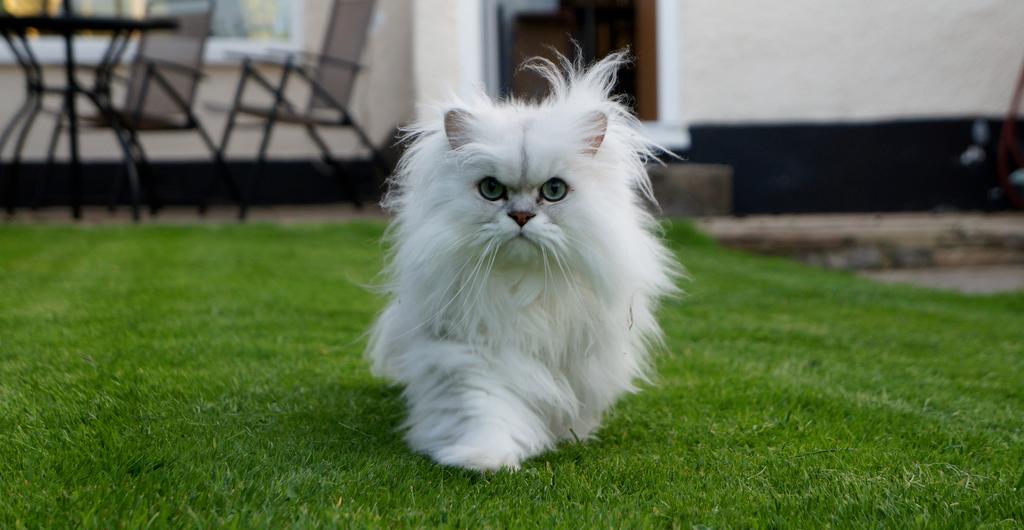
Due to its thick long hair, the Persian cat tolerates cold well, but it is still worth taking some preventive measures to avoid colds. Do not place the cat house or bed near the front doors, windows and other places where drafts are possible. And if your pet prefers to spend time lying on the windowsill, lay him a soft warm cloth.

In matters of nutrition, almost without exception, breeders recommend opting for ready-made feeds of the highest quality category. Accurately calculated and well-balanced daily allowances will provide your cat with everything they need, even without the addition of natural products to the diet. Mixed or natural feeding is more troublesome, as sometimes there is not enough time to prepare food for a cat separately, and the human menu does not suit her by definition. Seasonings, sugar, salt in excess quantities can cause serious harm to the cat’s body. Be sure to introduce in the right proportions (1 tablet with calcium + 3 tablets with algae extract or vice versa – depending on the color) special vitamin supplements with a seaweed complex (with any type of feeding) in the cat’s diet. The availability of free access to clean water is not even discussed.
Persian cats are prone to overeating, so you need to control their nutrition and in no case feed them from your table or from your hands.
The special pride of the Persian cat is its coat. Caring for her is an art. You will need various tools – a rare comb with rounded teeth, a natural bristle brush, regular hair clippers. During the seasonal shedding period, a special wool forcing spray may come in handy.
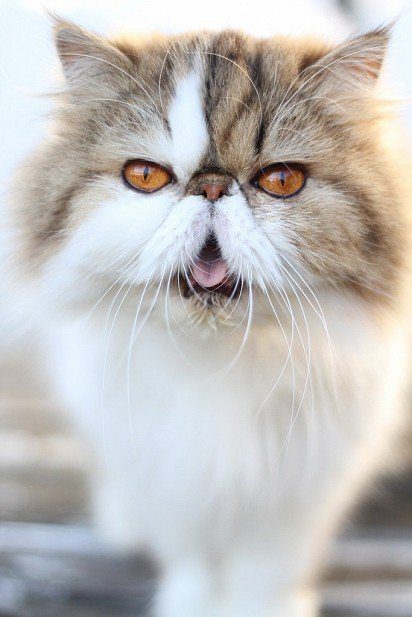
The structure of the coat of animals is such that, without systematic care, tangles form very quickly, which can only be eliminated in a radical way. To avoid such troubles, some owners comb the animal daily and rarely bathe, while others, on the contrary, often use water procedures followed by hair styling. You can choose your path only experimentally. The main thing is the systematic and constant adherence to the chosen procedure.
For the purpose of prevention, it is recommended to sprinkle the coat with a special grooming powder purchased at a pet store. Baby powder is not suitable: they contain starch, which harms the cat’s body, and the cat will definitely swallow it, licking itself.
Do not use a slicker when grooming a Persian cat – the hairs of the undercoat in this breed are very slowly restored. Do not brush your pet’s tail unless absolutely necessary.
Caring for the ears and teeth of a Persian cat is standard, but the eyes of the animal require a little more attention. They need to be cleaned daily, but not with cotton wool, but with a clean soft cloth moistened with special drops or distilled water. Do not use any wet wipes!
Bathe the animal in warm water (depth no more than 10-12 cm) using special shampoos, avoiding getting the head wet. As a precautionary measure, apply eye drops to the Persian cat’s eyes, and put cotton swabs in the ears.
Given the natural laziness of Persian cats, it is imperative to play with them to keep fit: with kids – 3-4, with adults – 1-2 times a day.
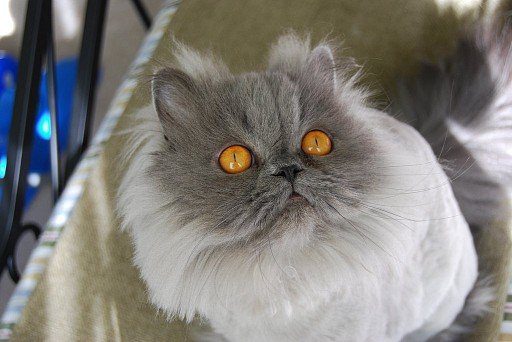
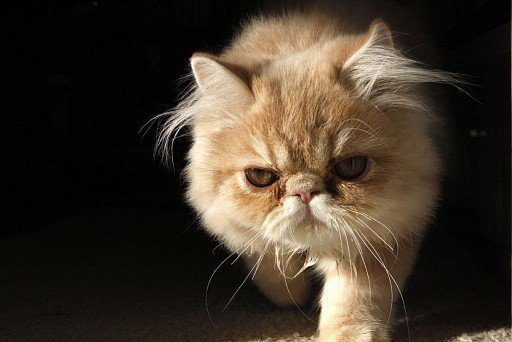
Health and disease of the Persian cat
The Persian cat is distinguished by good health, but there are a number of diseases, the predisposition to which the Persians are quite high.
Almost fifty percent of Persian cats are at risk for a very dangerous disease – polycystic kidney disease. The first symptoms of the onset of the disease can be considered loss of appetite, depression of the animal, frequent urination. The appearance of these signs requires immediate treatment to the veterinarian. In the absence of the necessary treatment, by the age of 7-9 years, the cat is likely to develop renal failure, which can lead to the death of the animal.
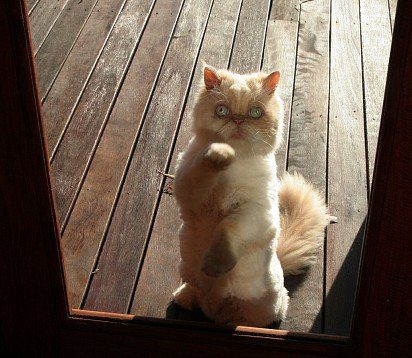
A dangerous genetic disease is hypertrophic cardiomyopathy, which is symptomatically expressed in palpitations, periodic fainting. The complexity of diagnosis lies in the fact that this symptomatology in 40% of cases does not manifest itself in any way before the onset of a sudden death. Statistics show that cats are more likely to suffer from this disease than cats.
A lot of trouble can be delivered to your pet by retinal atrophy, which usually begins at an early age and progresses rapidly – a kitten can become completely blind by the age of four months.
Teeth are another weak point of the Persian cat. Changing the color of the enamel, an unpleasant smell from the mouth should be the reason for a visit to the clinic. The result of your inattention may be the development of gingivitis (inflammation of the gums) and tooth loss.
Like all long-haired cats, Persians can develop skin diseases if they are not properly cared for. Do not forget to bathe your pet in a timely manner and comb long hair daily with special soft brushes.
The special structure of the muzzle of the animal caused increased tearing. The glandular ducts of the Persian cat are almost completely blocked, which causes tear fluid to flow out. Your fluffy “chronic crybaby” requires daily hygienic care of the eyes and muzzle.
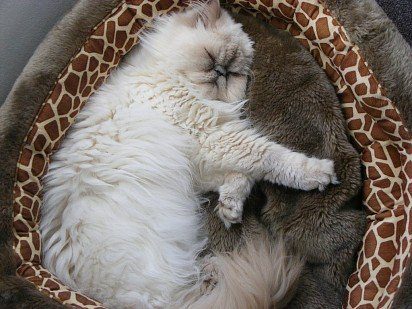
Almost all Persian cats snore or snore while sleeping. The reason for this is a shortened nasal septum. It is almost impossible to fix the defect. It remains only to treat him as a cute flaw. Moreover, this does not affect the general condition of the beast.
This breed does not like to bathe very much, but they need to be bathed more often.
Often licking themselves, neat Persians swallow some of the wool, and it accumulates in the stomach. To avoid health troubles, you should give your cat special tablets or paste that will help you get rid of woolen lumps painlessly.
Practice shows that with proper care, timely vaccination, and professional veterinary care if necessary, it is possible to significantly reduce the risks of various diseases or alleviate their course.
With good owners, a Persian cat is quite capable of living happily for about 15-17 years, and some live up to 20 years.
How to choose a kitten
So, you answered positively to yourself the questions: do you want to get a cat, will it be Persian, and will you have enough time to provide your pet with decent care.
The time has come to select and purchase a kitten. It is best to solve the issue of buying a thoroughbred Persian through specialized clubs. Experts will help with the choice, and you are guaranteed to buy a healthy, high-pedigree baby.
If there is no such club in your city, we recommend that you follow the following tips:
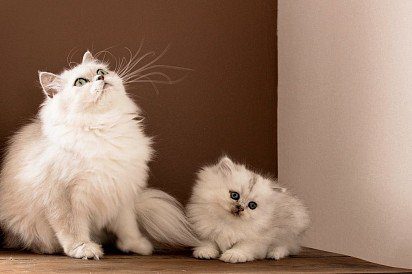
- take the animal only from the mother cat. So you can evaluate the appearance of the parent, see if she is healthy, in what conditions she is kept with her kittens. You can ask the owners if the kids are accustomed to the tray, what kind of diet they are used to. Serious breeders must provide you with registration documents (metrics or pedigree) for both parents and kittens;
- You can pick up the crumbs only after they reach two months. At this age, he already knows how to eat on his own and will more easily endure separation from his mother. If you plan to use your Persian cat for breeding and exhibition in the future, wait until the kitten is three to four months old. At this age, it is already possible to more specifically assess its compliance with the breed standard;
- examine your chosen one. The eyes and ears should be clean, the tummy should be soft. The fur around the anus is clean and dry. On the body of the baby there should be no traces of combing and baldness. Also make sure that there is no unpleasant smell from the mouth;
- it is better to purchase kittens of breed or show classes together with an expert. He will professionally assess the condition of the animal for compliance with the standard, the absence of signs of genetic diseases. You can not do without the help of a specialist when choosing a Persian kitten of a complex color;
of course, all kittens offered to you must be vaccinated and have documentary evidence of this.
Photo of persian kittens
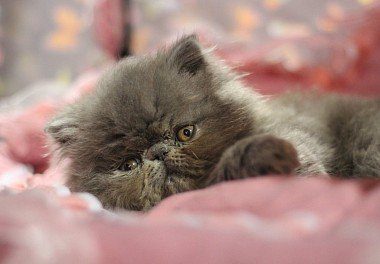
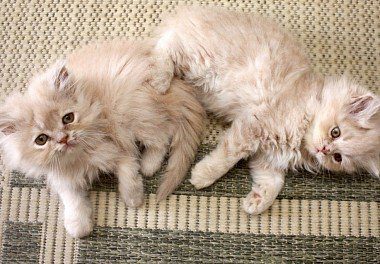
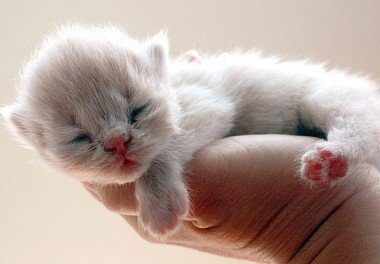
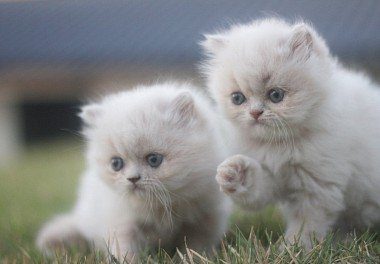
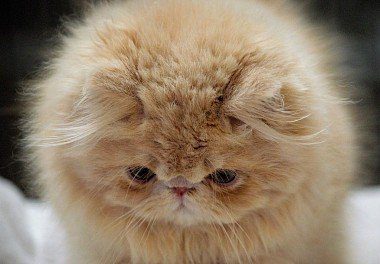
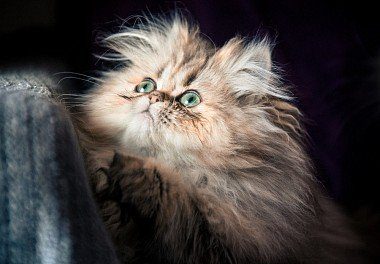
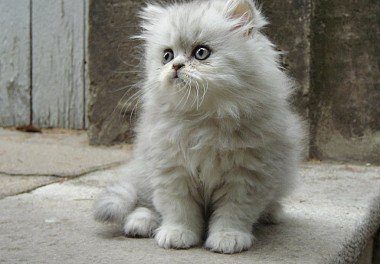
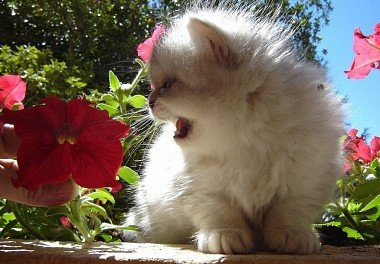
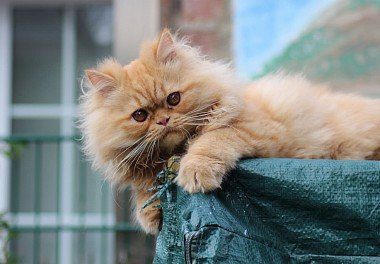
How much is a persian cat
If we compare prices for Persian kittens of classic and extreme types, then they are quite comparable.
In the case when you just want to get a Persian at home “for the soul”, then a kitten without a pedigree from unregistered parents will cost about 50$. A pet-class kitten bought from a breeder will lighten your wallet for about 150$. The price for breeding animals that have the appropriate documents and are suitable for breeding work will start from 250$, and representatives of the show class from champion sires can cost in the range of 400-500$.
In each case, the cost of a kitten will be determined on an individual basis. Many factors affect the final amount, namely:
- cattery rating;
- level of exhibition achievements of parents;
- conformity of the kitten to breed standards.
The price will also include some amount to cover the costs associated with breeding and raising a kitten (vaccinations, veterinary services, club fees).
Among the subjective factors affecting the price of an animal, one can single out the color and quality of the coat. Kittens of rare colors are more valued, and if we talk about the classics, then a white Persian cat will cost more.
The gender of the animal also affects the final price. Girls are in high demand.
It is better to buy Persian kittens from breeders or specialized catteries. A trip to the bird market is unlikely to bring you the expected results in terms of the thoroughbredness and thoroughbredness of the acquired Persian.



